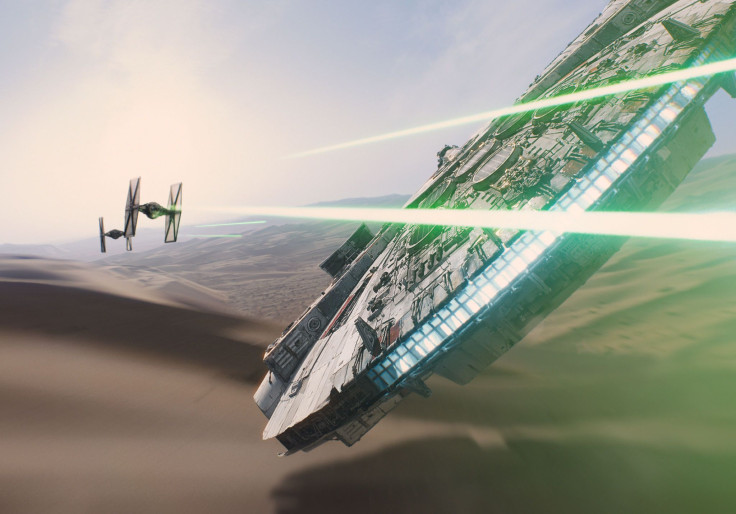Star Wars: Here’s How Long It Could Take The Walt Disney Company To Make Back Its Money

When Disney bought Lucasfilm for $4 billion in 2012, some investors scoffed. At the time it had been seven years since the release of the last “Star Wars” film, and the longtime sci-fi series seemed as dusty as Luke Skywalker’s remote desert world of Tatooine that was featured in the first film of the franchise in 1977.
Skip forward to Wednesday, a day after the premiere of “Star Wars: The Force Awakens,” chapter seven in the epic space tale. The overwhelmingly positive early reactions has given Disney CEO Bob Iger more reason to believe the acquisition of the film franchise was a savvy move, contrary to what critics were saying at the time. Now, these naysayers have likely moved to the light side of the force.
Three years after Disney’s fourth-largest acquisition, the world’s largest media and entertainment conglomerate is about to see how the film, which cost $200 million to produce, will help the company break even on its weighty acquisition. Disney watchers are saying the company could recover its Lucasfilm money well before the scheduled third “Star Wars” film in the current series is out in 2019.
Three Years, Tops
“I look at about a two-year timeframe to recoup the initial $4 billion,” said Robin Diedrich, consumer discretionary analyst for Edward Jones. “So after this film and the next one, that’s planned to come out [in May 2017], including the licensing and the merchandising, we’re looking at two to three years.”
Any way you look at it, the “Star Wars” movie franchise is expected to be a huge revenue earner for Disney in the long term, offsetting losses the company is facing from customers ditching its lucrative ESPN sports network.
“Star Wars: The Force Awakens” has only been out for two days — it premiered in the U.K. on Wednesday — and analysts are already upgrading their revenue expectations.
On Tuesday, Goldman Sachs raised the film’s total global box office sales forecast to $1.95 billion from $1.5 billion, which would make it the third-highest grossing film of all time, after director James Cameron’s “Avatar” (2009) and “Titanic” (1997). Revenue from the global sale of Star Wars-themed merchandise is expected to hit $6 billion in the company’s current fiscal year ended October, the bank estimates. That’s equivalent to what Disney is estimated to have earned in its past fiscal year on goods based on its successful “Frozen” blockbuster.
The investment bank forecasts that every $100 million in film proceeds will rake in 2 cents per share for the company’s current 2016 fiscal year. It estimates an additional 1.6 cents per share for every $500 million in global Star Wars-related merchandise revenue. Based on the number of current shares, that would come to $644 million in box-office profit and about $1.03 billion in merchandise profit, recovering about a third of the price for Lucasfilm by October.
These estimates are preliminary, and will fluctuate depending on various factors, including how much Disney spends marketing its film globally, as well as external factors such as currency fluctuations and the effect economic downturns have on disposable incomes.
What About China?
China, an increasingly vital market for the industry’s tentpole films, is a big question mark.
When the first “Star Wars” movie was released nearly 40 years ago, China’s movie market was closed to the outside world. This means that unlike virtually everywhere else (except, most notably, India), Chinese moviegoers don’t have as much history with the film franchise.
“The originals were released in the ’70s,” said Diedrich. “So one question is how much they will spend to promote the film in China.”
Walt Disney Co. (NYSE:DIS) shares rose 1.44 percent to $113.78 on Wednesday. The company’s shares are up 24.36 percent for the year and about 120 percent since the company bought Lucasfilm.
© Copyright IBTimes 2025. All rights reserved.






















